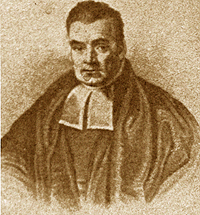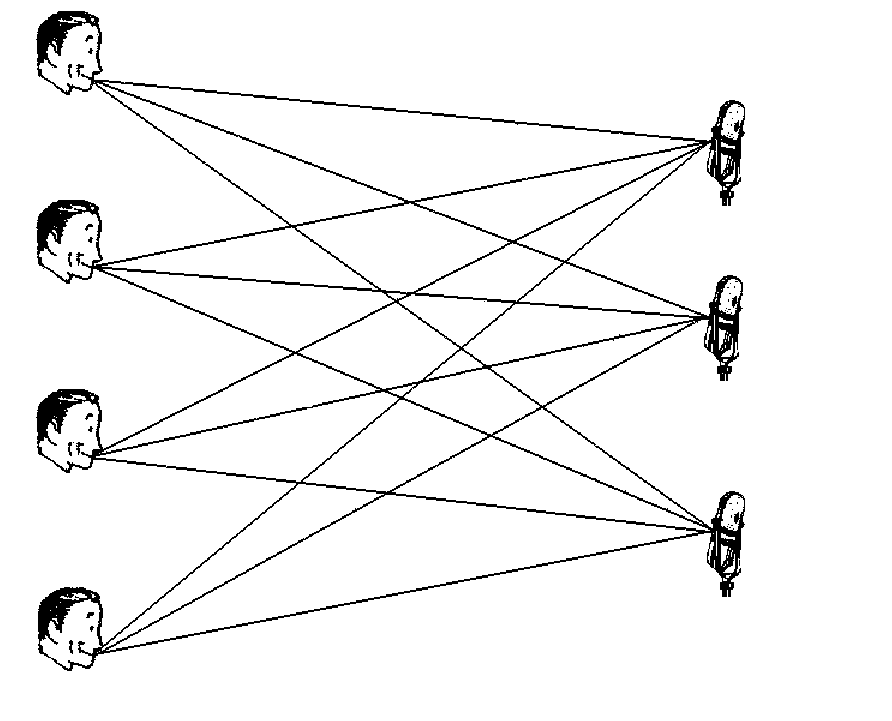


Bayesian Source Separation

 "
problem. At a cocktail party, there are p
microphones that record or observe m partygoers
or speakers at n time increments.
The observed conversations consist of mixtures
of true conversations. The problem is to unmix or recover the
original conversations from the recorded mixed conversations.
A given microphone
"
problem. At a cocktail party, there are p
microphones that record or observe m partygoers
or speakers at n time increments.
The observed conversations consist of mixtures
of true conversations. The problem is to unmix or recover the
original conversations from the recorded mixed conversations.
A given microphone
 is not placed to a given speakers mouth
and is not shielded from the other speakers.
is not placed to a given speakers mouth
and is not shielded from the other speakers.



| (xi|si,m) | = | f(si|m) | + | εi , |
| (p x 1) | (p x 1) | (p x 1) |
| f(si|m) = f(c) + f'(c)(si - c) + · · · |
| f(si|m) | = | f(c) + f'(c) (si - c) |
| f'(si|m) | = | [f(c) - f'(c) c] + f'(c) si |
| f(si|m) | = | µ + Λ si |
| (xi|µ,Λ,si,m) | = | µ | + | Λ | si | + | ε i , |
| (p x 1) | (p x 1) | (p x m) | (m x 1) | (p x 1) |
| (xij|µj, λj,si,m) | = | µj + Σk=1m λjk sik + εij |
| = | µj + λj' si + εij. |